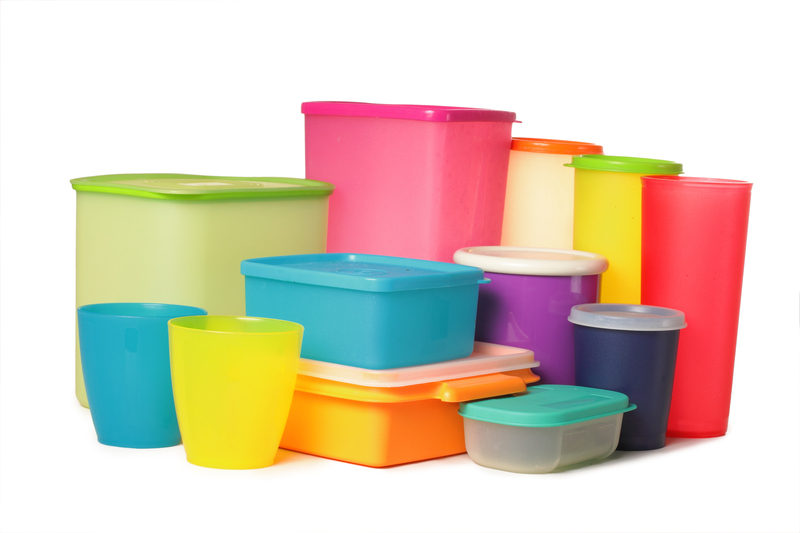Creative Ideas to Cut Down Bulky Waste Item Costs
Bulky waste items - think old mattresses, broken furniture, large appliances, and other oversized refuse - present a unique challenge for many homeowners and businesses. Disposing of such items can be both environmentally taxing and expensive. But what if you could minimize bulky waste disposal costs, help the environment, and maybe even make a little extra cash? In this comprehensive guide, we'll explore creative, cost-effective solutions to cut down the price of getting rid of your large waste items.
Why Is Bulky Waste Disposal Expensive?
Bulky waste disposal fees can be surprisingly high. Collection, transport, and landfill charges add up, especially for items that are complex to process or contain materials requiring special handling. Municipalities often restrict free collection services, leading many people to seek expensive private solutions. By understanding the cost factors, you can better appreciate the value of inventive alternatives.
Cost Factors Include:
- Size and Weight: Larger or heavier items require more resources to collect and transport.
- Material Content: Hazardous materials or recycler-unfriendly components cost more to process.
- Distance to Landfill or Processing Center: Remote locations equal higher hauling fees.
- Municipal Fees and Restrictions: Some councils limit the number or type of free bulky item pickups.

Creative Strategies to Reduce Bulky Waste Disposal Costs
1. Sell or Give Away Usable Items
One of the best ways to minimize bulky waste disposal costs is to avoid disposal altogether! Many large household items can find a second life. Consider these avenues:
- Online Marketplaces: List items on platforms like Facebook Marketplace, Craigslist, Gumtree, or OfferUp. Even broken electronics or old sofas may be valuable for parts or upcycling.
- Community Freecycle Groups: Give away unwanted furniture or appliances--some people are looking for free renovation materials, garden planters, or even art projects!
- Charity & Thrift Shops: Many organizations collect furniture and appliances in good condition for resale or donation.
Tip: Take clear photos and provide honest descriptions to attract interest and reduce time-to-removal.
2. Repurpose and Upcycle Bulky Waste
*Get creative and save money!* Many "waste" items can be reimagined for entirely new uses:
- Turn old doors or windows into tables or greenhouses.
- Convert bed frames into shelving units or benches.
- Reupholster sofas and chairs to extend their lifespan at home or sell them for profit.
- Transform washing machine drums into fire pits, planters, or storage baskets.
Repurposing not only reduces the cost of bulky waste disposal but also adds unique charm to your home or garden.
3. Use Local Council Free Collection Services
Most municipalities offer free or subsidized large item collection programs. Check your city or county website for eligibility and schedules. Here's how to maximize this resource:
- Plan Ahead: Free pick-ups often require advance booking and may be limited to a set number of items per year.
- Group Items: Consolidate waste with neighbors to split collection fees or maximize item limits.
- Follow Rules: Ensure items are properly prepared (e.g., doors removed from fridges) to avoid rejection or extra charges.
Note: Some services exclude items like construction debris or certain electronics. Always review guidelines to minimize unexpected costs.
4. Share Removal Costs with Neighbors
If you and your neighbors have bulky waste, consider pooling resources for a shared private haul or dumpster rental. This creative approach spreads costs and can save substantial money if municipal services are limited.
- Bulk Discounts: Many haulers offer lower rates for larger loads.
- Group Clean-Up Days: Organize a neighborhood event for bulk disposal and split the expenses.
5. Hire Specialized Junk Removal Services Wisely
Sometimes, hiring a professional junk removal company is the only option. Reduce costs by:
- Comparing Multiple Quotes: Always shop around for the best price and ask about discounts or bundled deals.
- Preparing Items: Disassemble bulky items in advance to decrease labor time and fees.
- Scheduling Off-Peak Pickups: Companies may charge less during slower periods.
- Combining Multiple Waste Types: Include other items to maximize the value of a single pickup.
6. Leverage Recycling Centers
Recycling drop-off centers often accept large metal, wood, and electronic items--sometimes for free or at minimal cost. This approach offers:
- Environmental benefits
- Significant savings over landfill disposal
- Opportunities to recycle or salvage items for future projects
Check local rules and schedules, as some centers only accept household waste on certain days or require appointments.
7. DIY Disposal: Rent a Van or Skip Bin
If you have multiple bulky items and reliable transport, DIY disposal at a landfill or recycling facility can be cost-effective. Renting a van or skip (dumpster) provides flexibility--especially during major clear-outs or renovations.
Remember: Factor in disposal fees and fuel costs to ensure this method is economical. Properly sort waste by type to minimize extra charges and facilitate recycling.
8. Explore Take-Back and Trade-In Programs
Retailers and manufacturers increasingly offer take-back programs for old mattresses, appliances, and electronics when you purchase new items. This can eliminate or significantly reduce bulky disposal charges. For example:
- Mattress retailers offering complimentary removal with delivery
- Appliance stores accepting trade-ins on old fridges and washing machines
- Electronics manufacturers providing free e-waste drop-off or mail-back
Ask before you buy! These programs can save both the environment and your wallet.
Tips to Prevent Bulky Waste Build-Up
Prevention is cheaper than disposal. Keep future bulky waste item costs low by:
- Choosing Durable, Repairable Goods: Invest in high-quality items designed to last and be fixed rather than replaced.
- Opting for Modular or Multi-Use Furniture: Items that adapt as your needs change reduce the need for new acquisitions.
- Maintaining Appliances & Furniture: Regular care can dramatically extend lifespans and delay the need for bulk disposal.
- Renting or Sharing Large Items: Use sharing economy apps or local hire shops for infrequently needed bulky items.
Smart shopping pays off with easier, cheaper end-of-life disposal.
Eco-Friendly Bulky Waste Disposal Techniques
Reducing costs and environmental impact go hand-in-hand when you:
- Support local upcycling initiatives (e.g., community 'repair cafes' or creative re-use workshops).
- Choose donations over dumping - extending product life helps those in need and diverts waste from landfill.
- Separate recyclables to reduce the share of landfill-bound materials and associated charges.
Green solutions sometimes result in tax benefits or free collection, lowering the total cost of getting rid of bulky waste items.
Case Studies: Real Ways People Save Money on Bulky Waste
Urban Apartment Residents
With limited vehicle access, residents of city apartments face unique challenges. Sarah, in her mid-30s, needed to dispose of an old sofa and fridge. She saved ?100 by:
- Selling the sofa via an online marketplace for ?20
- Using her council's free annual appliance collection for the fridge
Total bulky waste disposal cost: ?0 net (plus a little extra cash!)
Rural Family Homeowners
The Johnson family, living outside city limits, must pay for private waste haulers. When it was time to clear their barn, they:
- Rented a skip and combined their load with two neighbors
- Took all metal items to a scrap recycler (earning ?40)
- Donated gently used furniture to a local charity
This approach: 50% cost reduction compared to hauling independently and less landfill waste!
Small Business Owners
Office upgrades lead to e-waste and furniture surpluses. Ravi's company:
- Contacted a furniture reseller to clear old desks for free
- Used an electronics recycling drop-off for obsolete computers
- Hired a bulk hauler only for non-recyclable and broken items
Segmenting waste streams reduced total costs by an estimated 65% ?.

Frequently Asked Questions about Bulky Waste Savings
- Can I leave bulky items on the curb for free?
Usually only on designated collection days approved by your local council. Illegal dumping can result in fines. - Who will take old furniture for free?
Many charities, thrift shops, and some online group members will collect large items for free, provided they're still usable. - What about specific items like mattresses or fridges?
These may require special handling because of safety or environmental rules. Use council programs, retail take-back, or certified recyclers. - Are private junk removal services worth it?
For very heavy, difficult-to-move, or hazardous items, yes--but always compare pricing and try to share with neighbors if possible. - How do I recycle bulky appliances?
Check for white goods recycling at local centers, retail trade-in deals, or municipal collection schemes.
Summary: Save Money and the Planet with Smart Bulky Waste Disposal
Whether you're clearing out a single room or managing a whole property, reducing bulky waste item costs is possible with a bit of planning and ingenuity. Remember:
- Sell, donate, or upcycle before dumping.
- Leverage council services and local charities.
- Pool resources with neighbors for bulk deals.
- Sort by material and recycle wherever possible.
- Ask retailers and manufacturers about take-back or trade-in programs.
Adopting these creative techniques not only cuts costs but also supports a greener, cleaner community. Next time you're faced with a pile of large waste items, think beyond the skip--your wallet and the planet will thank you!
```